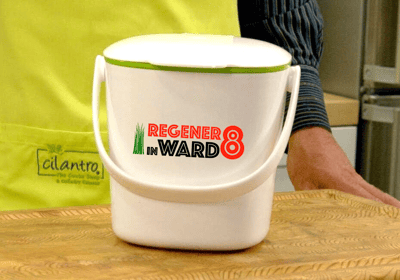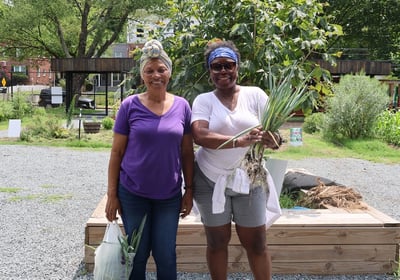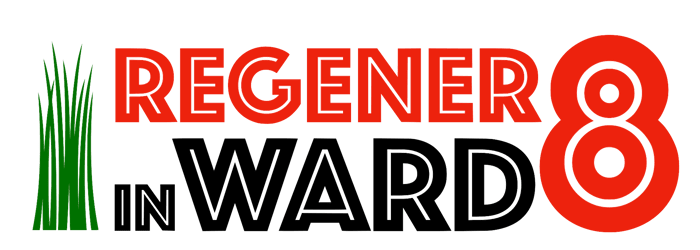Empowering the Urban Farmers of Anacostia
What is Regener8?
Regener8 (named after the Great Ward 8) seeks to integrate and amplify the thriving urban farming culture in the Ward. Regener8 will engage in a series of activities to empower the local farmers and land stewards who are trying to create a sustainable space for food equity.


How to Empower Urban Farmers?
Supporting urban farmers in Washington DC's Anacostia region to combat food apartheid and climate change.
Volunteer
Ward 8 farms are always in need of volunteers. Check out their websites for volunteering opportunities.


Compost
Ward 8 farms have fresh produce pick up dates and organize activities. Check out their calendars and join their events.
Show your support for local fresh produce by composting your food scraps and regenerating our soil.
Engage




Urban Farming
Empowering urban farmers to combat food apartheid and climate change.


What is Urban Farming?
Urban farming refers to the practice of growing food within city environments, leveraging unused or underutilized spaces. This can include rooftops, vacant lots, community gardens, and even indoor spaces. The primary goals of urban farming are to enhance food security, reduce food miles, and foster community engagement.
Urban farming typically involves a range of methods, from traditional soil-based gardening to more advanced hydroponics and aquaponics systems. These methods allow for the cultivation of a variety of crops, from vegetables and herbs to fruits and even fish. By growing food locally, urban farming helps reduce the environmental impact associated with transporting food and can improve access to fresh produce in food deserts.
In addition to its practical benefits, urban farming contributes to the aesthetic and social fabric of cities. It can transform neglected spaces into vibrant community hubs, promote sustainability, and provide educational opportunities about food production and healthy eating. As cities continue to expand, urban farming represents a promising way to integrate agriculture into urban living, making cities more resilient and self-sufficient.


What is Food Apartheid?
Food apartheid refers to a system of inequity in which certain communities, often marginalized or low-income, have limited access to affordable, nutritious food. This term highlights the systemic and structural issues that perpetuate food insecurity, going beyond the concept of food deserts.
While "food deserts" typically describe areas with limited access to supermarkets or fresh produce, "food apartheid" emphasizes the racial and economic injustices that contribute to these conditions. It underscores how historical and ongoing discriminatory practices—such as redlining, disinvestment in communities, and unequal economic opportunities—create and sustain barriers to accessing healthy food.
Food apartheid is driven by a combination of factors, including economic disparities, geographic isolation, and systemic racism. Communities affected by food apartheid often experience higher rates of diet-related diseases, such as obesity and diabetes, due to the prevalence of processed and unhealthy food options. Addressing food apartheid requires systemic change, including policies that promote equitable distribution of resources, support local food systems, and dismantle the structural barriers that contribute to food insecurity.




What is Climate Resilience?
Climate resilience in farming involves adapting agricultural practices to withstand and recover from the impacts of climate change, such as extreme weather events, shifting growing seasons, and changing pest and disease patterns. It aims to ensure that farming systems remain productive, sustainable, and economically viable despite these challenges.
Key strategies for enhancing climate resilience in farming include diversifying crops and livestock to spread risk, implementing soil conservation practices to maintain soil health and reduce erosion, and adopting water management techniques such as rainwater harvesting and efficient irrigation systems. Agroforestry and cover cropping can also improve soil structure and fertility while providing additional environmental benefits.
Farmers can also utilize climate-smart practices like adjusting planting dates, selecting drought-resistant varieties, and employing integrated pest management to mitigate risks. Additionally, building strong community networks and accessing technical support and information can enhance farmers' ability to adapt to changing conditions.
Overall, climate resilience in farming not only helps maintain agricultural productivity but also supports broader environmental sustainability, safeguarding ecosystems and natural resources for future generations.
Seed Exchange Initiatives
Seed exchange programs are popular across the U.S. for promoting biodiversity, preserving heirloom varieties, and fostering community engagement in gardening. Here are some of the most notable ones:
Seed Savers Exchange: Founded in 1975, this non-profit organization is one of the largest and most well-known seed exchange programs. It focuses on preserving heirloom seeds and maintaining a diverse seed bank. Members can exchange seeds and access a wide variety of rare and traditional plant varieties.
The Sharing Backyards Program: This initiative is part of the larger Urban Agriculture Initiative, which facilitates seed sharing and gardening support in urban areas. It encourages local seed exchanges and community gardens to promote sustainable urban agriculture.
Botanical Interests Seed Exchange: This company, known for its high-quality seeds, also operates a seed exchange platform where gardeners can swap seeds and share gardening tips. They emphasize organic and heirloom varieties.
Southern Exposure Seed Exchange: Based in Virginia, this organization specializes in open-pollinated, heirloom, and organic seeds. They also support seed exchanges and offer a seed catalog with a focus on varieties suited for the Southern U.S. climate.
Community Seed Exchange Networks: Local and regional seed libraries and community-based seed exchange programs often operate independently but play a crucial role in local seed conservation and sharing. Examples include the Seattle Seed Library and the NYC Seed Library Network.
